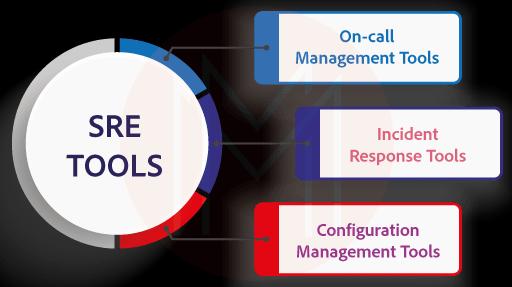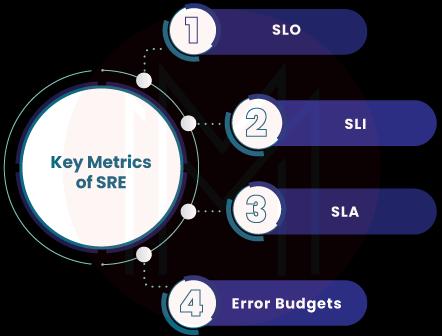- Top 10 DevOps Tools for Continuous Integration
- Top 10 Devops Tools
- Repository Management Tools
- 10 Tools For Effective DevOps Collaboration
- Top 12 Open Source DevOps Build Tools
- Configuration Management Tools in DevOps
- Agile Vs DevOps
- Chef DevOps Interview Questions
- What is Continuous Integration in DevOps?
- Insights of DevOps Architect
- DevOps Automation: How is it Carried Out?
- Introduction To DevOps Docker
- DevOps For Dummies
- DevOps Interview Questions
- 13 DevOps Testing Tools For DevOps Professionals
- Best DevOps Tools and Frameworks to explore
- DevOps Tutorial For Beginners: A Step-by-Step Guide To Learn DevOps
- Cacti Graphing And Monitoring
- RANCID Tool Keeps Config Files Clean
- How To Enable LLDP on Linux Servers for Link Discovery
- How to set up a modern web stack in Ubuntu
- Useful Iperf Commands for Network Troubleshooting
- Migration of MongoDB to DynamoDB
- MongoDB and Tree Structures
- Multihost SSH Wrapper
- DevOps Tools for Infrastructure Automation
- Introduction To Azure DevOps
- Introduction To DevOps Tools
- List of DevOps Monitoring Tools
- The Ultimate List of DevOps Deployment Tools
- Top 10 Open Source Containerization DevOps Tools
- Reasons for the Rise of DevOps
- Role Of a DevOps Engineer
- DevOps Security Tools
- Some Common Myths about DevOps
- Top 10 Devops tools in cloud
- Release Management Tools
- Top 10 SCM Tools
- Logging DevOps Tools
- DevOps And Its Significance
- DevSecOps Interview Questions
- Ansible vs Chef
- DevSecOps Tutorial
- Site Reliability Engineer(SRE) Interview Questions
- What is DataOps?
- DevOps Vs SysOps
- DevOps Engineer Job Description
- Azure DevOps Jira Integration
- What is Pipeline in DevOps?
- SonarQube Azure DevOps
- Azure DevOps CI/CD
What is Site Reliability Engineering?
How does Site Reliability Engineering work?
Why is Site Reliability Engineering important?
Benefits of Site Reliability Engineering.
What are the Site Reliability Engineering tools?
Key Principles of Site Reliability Engineering.
What are the Key Metrics of Site Reliability Engineering?
Nowadays, building an application is not over by deploying them in a production environment. You need to make changes and updates in the applications continuously.
In a production environment, releasing new features or updates or fixing bugs may raise errors, cause malfunction, etc. No doubt, it questions the reliability of applications. You need to ensure the reliability of a production environment by eliminating errors while updating new features or during maintenance. So, building applications that can adapt to frequent updates is highly essential. Simply put, applications should have good reliability as well as stability.
On that note, you can understand why Site Reliability Engineering (SRE) has gained prime importance in establishing the reliability of applications.
It’s worth noting that Site Reliability Engineering enhances the reliability of the environment by managing IT operations efficiently, applying automation tools, and so on.
Now, it’s time to dig into Site Reliability Engineering in greater detail. This blog covers all you want to know about Site Reliability Engineering including SRE principles, critical metrics of SRE, SRE tools, SRE engineer roles as well as responsibilities, and a lot along the road.
What is Site Reliability Engineering?
On a fresh note, Site Reliability Engineering is the software approach that elevates IT operations from traditional to modern ones. SRE uses powerful software tools to optimize all IT operations, including monitoring applications.
Additionally, Site Reliability Engineering uses automation tools to replace repetitive manual tasks. By doing so, you can easily manage applications and solves issues quickly – no matter how large the systems are. As a result, SRE maximizes the efficiency of IT operations and minimizes IT risks. No wonder SRE can manage hundreds of thousands of machines effortlessly.
Further, Site Reliability Engineering scales applications seamlessly while ensuring reliability and stability in the best way.
| If you want to enrich your career and become a professional in SRE, then enroll in "Site Reliability Engineering Training" - This course will help you to achieve excellence in this domain. |
How does Site Reliability Engineering Work?
Are you interested in knowing how Site Reliability Engineering optimizes IT operations and increases the reliability of applications?
No worries! As you can see below, Site Reliability Engineering is implemented through SRE engineers.
- SRE engineers closely work with development teams from the design stage to deployment.
- For every new release or maintenance in applications in a production environment, SRE engineers prepare the key metrics such as SLO, SLA, SLI, and error budget.
- SRE engineers measure the error values once changes are made. Then they check whether the values lie within the tolerance level or not. If the values fall within the tolerance level, they only allow the update to continue.
- If the error values don’t fall within the tolerance level or error budget, SRE engineers hold the changes. After that, they work with developers to resolve the issues.
- Only when the error values lie within the error budget, do SRE engineers allow the changes to continue in the production environment.
Why is Site Reliability Engineering Important?
Okay! If you want to know why SRE plays a prime role in ensuring the reliability and scalability of applications, you can find the reasons below:
- Improved Collaboration
Site Reliability Engineering helps remove conflicts between the IT operations and the development team. This is because development teams always want to release new features, but operations teams want to release only 100 percent bug-free features.
To overcome the hassle and tussle between the development and IT operations teams, SRE comes into the scene and acts as the bridge between the two. This is because SRE teams closely work with developers from software design to deployment. They can completely understand issues at the code level and resolve them with their coding skills. So, it is effortless for SRE teams to ensure the smooth operation of applications.
- Streamlined IT Operations
No one can deny that any software may fail at any time for any reason. Site Reliability Engineering comes with powerful SRE practices that help to reduce downtime as low as possible. Not only that, SRE uses efficient automation tools to streamline IT operations and reduce errors to the least.
- Enhanced Customer Satisfaction
It doesn’t matter how often developers interrupt applications' regular functioning with new updates or any other; the Site Reliability Engineering team can ensure the seamless functioning of applications. Simply put, SRE offers uninterrupted services to customers all the time.
Benefits of Site Reliability Engineering
There are many noteworthy benefits that you can reap by employing Site Reliability Engineering in your production environment.
Let’s discuss a few benefits in the following one by one at a glance.
- Greater Visibility: Generally, Site Reliability Engineering measures metrics associated with deploying new features and updates in a production environment and their performance. These metrics, in addition to logs, mirror the health of applications. It increases visibility across the entire operations of the applications. As a result, you can find the root cause of issues accurately
- Better Control on Downtime: As you know, Site Reliability Engineering measures SLA violations and associated downtime. These measurements help to apply suitable corrective measures. So, you can avoid SLA violations as well as reduce the impact of downtime as low as possible.
- Faster Incident Response: Site Reliability Engineering optimizes incident responses through on-call processes as well as streamlining alerting workflows.
- Smarter IT Operations: With the help of Machine Learning tools, Site Reliability Engineering sends alerts to the right people directly when there are issues. As a result, it helps to address issues quickly.
- Higher Reliability: Site Reliability Engineering significantly reduces IT operations risks and enhances reliability.
What are the Site Reliability Engineering Tools?
Know that Site Reliability Engineering tools are one of the robust tools with which you can monitor and observe applications thoroughly and respond strongly to incidents.
If you are wondering how the tools play a significant role in Site Reliability Engineering, read the following.

- On-call Management Tools: With these tools, SRE engineers support different teams in responding to issues. Mainly, these tools ensure that the support team is ready to respond to issues at any time.
- Incident Response Tools: By using these tools, you can categorize issues on applications based on their severity. Also, they allow performing post-incident analysis.
- Configuration Management Tools: These tools support automating software workflows. These tools can remove repetitive tasks and boost productivity to greater heights.
Key Principles of Site Reliability Engineering
Now, the question is, what are the key drivers behind Site Reliability Engineering?
The answer is simple. Site Reliability Engineering works based on a few SRE principles that work as the foundation for building reliability for applications.
Let’s have a closer look at them below:

- Applying Policies and Strategies: Site Reliability Engineering applies robust policies to perform application quality checks. As a result, SRE engineers can detect application issues after deploying new features and updates. When it comes to strategy, SRE engineers can even participate in software design. It supports SRE engineers to ensure the reliability of applications greatly.
- Monitoring Applications: You can efficiently monitor applications using Site Reliability Engineering practices. In this regard, SREs use metrics such as Service Level Indicators, Service Level Objectives, and Service Level Agreements to constantly track the performance of applications and analyze the results to gather helpful feedback.
- Implementing Changes: Site Reliability Engineering encourages frequent and minor updates in applications even though the updates come up with errors after the deployment. But the significant thing is that the errors must be within the tolerance level. Simply put, the errors must be within the error budget.
- Embracing Automation: Site Reliability Engineering always aims at reducing repetitive tasks. That’s why it uses automation tools to reduce manual processes and boost efficiency. Automation drives human resources to focus on more meaningful tasks rather than repetitive mundane ones. It is essential to note that reducing repetitive work opens up new opportunities. So, you can increase the efficiency as well as the speed of the implementation of software updates.
- Leveraging Release Engineering: Release engineering is nothing but a process that supports building and deploying software more consistently and stably. It includes effective configuration management, documentation, testing, and deployment. For leveraging release engineering, you must design release standards, prepare release guides, and review them frequently.
What are the Key Metrics of Site Reliability Engineering?
Metrics are one of the crucial elements of site reliability engineering. With the help of the key metrics, you can effectively ensure applications' reliability and stability.
Let's have a look at them as follows.

- Service Level Objectives (SLO): SLOs are the goals set to measure the performance of applications. They include uptime, system output, system throughput, and download rate.
- Service Level Indicators (SLI): SLIs are the actual measurements of applications. These values may be equal to SLOs or with a slight difference. For example, the expected SLO of an application is set as 99.96%, whereas the respective SLI is 99.91%. It means that there is a difference of 0.05 % between SLO and SLI.
- Service Level Agreement (SLA): Essentially, SLA is a legal agreement. It includes the responses you must perform when applications do not satisfy SLOs. For instance, if you cannot resolve an issue within one day, you must refund the customer.
- Error Budget: In its basic form, they are the tolerance level defined for the SLOs. For example, consider the error budget of a software’s downtime is 0.05%. If the actual value exceeds this, SRE engineers must initiate suitable measures to reduce downtime within the error budget.
[Related Article: What is AIOps]
SRE Engineer Roles as well as Responsibilities
As you know, SRE engineers implement SRE practices to stabilize applications and enhance reliability.
Let’s see the role of SRE and their responsibilities with a closer look.
Who is Software Reliability Engineer?
Essentially, an SRE engineer is a software developer with excellent IT operations background. In other words, an SRE engineer must have good coding skills in addition to IT operations.
No wonder every SRE engineer can work with developers to design software. At the same time, they can work with the IT operations team to manage applications. Also, they use SRE tools to automate and streamline IT operations. Overall, they ensure the consistency of applications in a production environment.
A simple but essential note is that SRE engineers are usually proactive – not reactive. In short, they don't allow the same errors to repeat.
Skills required for an SRE:
Another important thing is the skills of SRE engineers.
Let’s take a look at the essential skills that every SRE engineer must have:
- SRE engineers must have good coding skills in Java, Python, C/C++, Go, Node.JS, Ruby, etc.
- They must have sound knowledge of networking, databases, distributed systems, cloud computing, server clusters, container management, load balancing, as well as monitoring.
- Importantly, they must also be familiar with automation tools and data-analysis skills.
Responsibilities of SRE:
Want to know the responsibilities of an SRE engineer?
Let’s move on to the responsibilities.
- SRE engineers must balance their workload between IT operations and software development on a 50-50 ratio. They should spend 50 % of their time managing IT operations and another 50 % coding.
- When it comes to IT operations, SREs must perform emergency incident response, capacity management, change management, and IT infrastructure management. Also, they must analyze logs, apply patches, make performance tuning, conduct post-mortems, test production environments, and many more.
- Regarding software development, SREs should develop codes for scaling, automation, and resolving issues. They must closely work with the development team to release new software features and measure the performance of applications. If SREs find anything working against the things defined in SLA, they should alert the developers for corrective measures.
- Moreover, SREs must be able to work on multiple projects at a time. Their prime focus should be on ensuring software reliability and stability. Along with that, they must monitor applications, enable alerts to teams, and prepare documentation as well.
- If there is any deviation from SLA, they must fix the errors immediately and bring the condition back to normal. Also, they need to automate the tasks that they repeatedly do. Besides, they must record all their responses to resolve issues. This is because the records will help teams and customers use them in the future.
- As a whole, they must ensure the smooth running of applications by increasing the efficiency of IT operations.
Site Reliability Engineering Vs. DevOps
Site Reliability Engineering and DevOps aim to reduce the software development lifecycle period, enhance reliability, improve the quality of products, reduce IT operations time, and many more. In other words, SRE and DevOps have the common goal of reducing the gap between software development and operations.
However, keep in mind that SRE and DevOps are not the same.
To understand it better, let’s jump into the comparison between the two below.
|
|
DevOps |
SRE |
|
Objective |
It focuses on the core Software Development Life Cycle (SDLC) through the agile approach. In other words, it points out how to build and deploy applications with speed and quality. |
SRE uses SRE practices to check whether the implemented software works as expected and ensures a smooth flow of operations. |
|
Deployment |
It aims to release new features and updates that must be 100 % bug-free. |
It supports releasing new releases and updates within the error budget. SRE practices handle issues even when the releases are sent to a production environment. |
|
Duties of engineers |
DevOps engineers support developers in building, testing, deploying, and monitoring applications. |
SRE engineers support developers in releasing new updates and features smoothly. They usually have an IT operations background. Solving workflow problems is not a big deal for SRE engineers. |
|
Skills of engineers |
DevOps engineers will comparatively have good knowledge of operational tools than programming languages. |
SRE engineers will have the same expertise in programming languages as in SRE tools. |
|
Outcomes |
DevOps offers enhanced speed, increased business value, and high-quality service delivery. |
SRE minimizes IT risks and ensures seamless services to customers, providing reliability and stability to a production environment. |
[Related Article: DevOps Interview Questions]
Conclusion
It’s now time to, sum up. Reliability Site Engineering is a great approach that escalates the reliability and stability of applications to greater heights in a production environment. Undoubtedly, the core Site Reliability Engineering principles play a vital role in establishing stable applications. SRE engineers and developers work hand-in-hand and ensure the building of robust applications. Ultimately, Site Reliability Engineering improves IT operations, lowers IT risks, and enhances customer satisfaction.
 On-Job Support Service
On-Job Support Service
Online Work Support for your on-job roles.

Our work-support plans provide precise options as per your project tasks. Whether you are a newbie or an experienced professional seeking assistance in completing project tasks, we are here with the following plans to meet your custom needs:
- Pay Per Hour
- Pay Per Week
- Monthly
| Name | Dates | |
|---|---|---|
| Site Reliability Engineer Training | Jan 10 to Jan 25 | View Details |
| Site Reliability Engineer Training | Jan 13 to Jan 28 | View Details |
| Site Reliability Engineer Training | Jan 17 to Feb 01 | View Details |
| Site Reliability Engineer Training | Jan 20 to Feb 04 | View Details |

Madhuri is a Senior Content Creator at MindMajix. She has written about a range of different topics on various technologies, which include, Splunk, Tensorflow, Selenium, and CEH. She spends most of her time researching on technology, and startups. Connect with her via LinkedIn and Twitter .
















